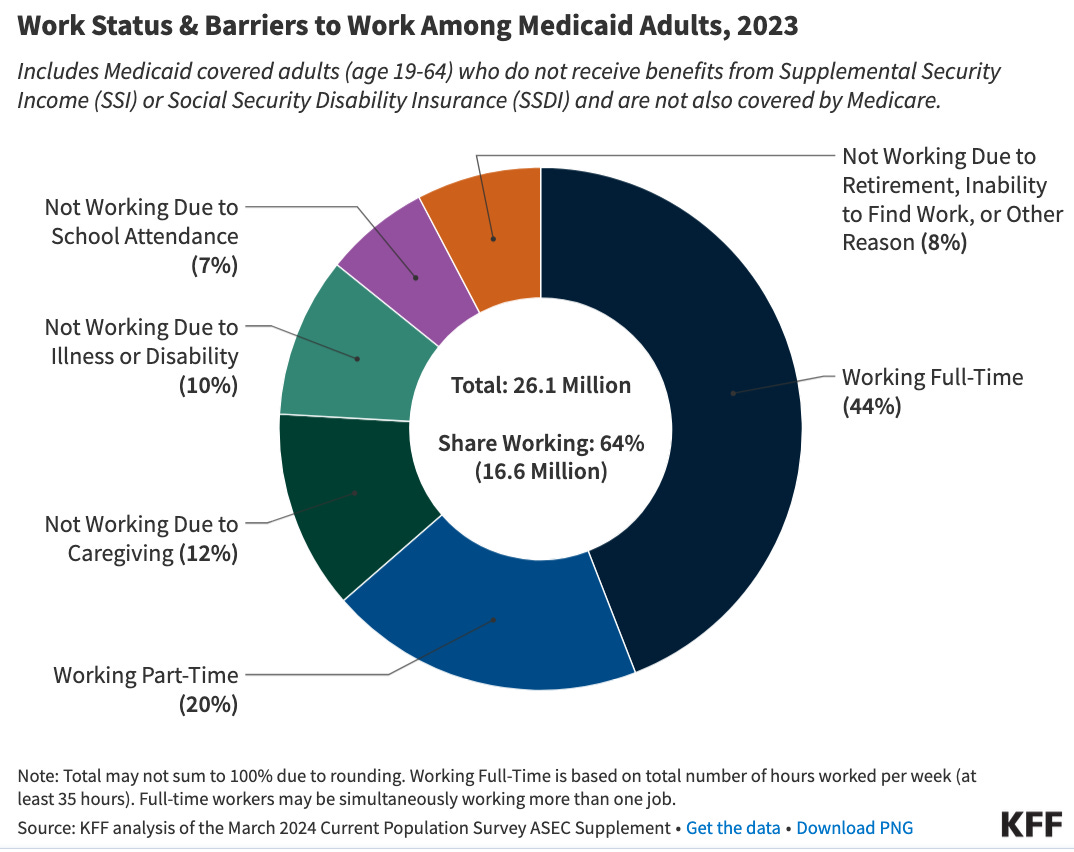AKA: Medicaid Death Watch
The vote tonight was a strict party line vote, with 16 Democrats voting against the measure, 17 Republicans voting for it, and 4 far right Republicans voting “present.” House speaker Mike Johnson (R-LA) said there would be “minor modifications” to the measure; Representative Chip Roy (R-TX) wrote on X that those changes include new work requirements for Medicaid and cuts to green energy subsidies.
And so the bill moves forward.
In The Bulwark today, Jonathan Cohn noted that Republicans are in a tearing hurry to push that Big, Beautiful Bill through Congress before most of us can get a handle on what’s in it. Just a week ago, Cohn notes, there was still no specific language in the measure. Republican leaders didn’t release the piece of the massive bill that would cut Medicaid until last Sunday night and then announced the Committee on Energy and Commerce would take it up not even a full two days later, on Tuesday, before the nonpartisan Congressional Budget Office could produce a detailed analysis of the cost of the proposals. The committee markup happened in a 26-hour marathon in which the parts about Medicaid happened in the middle of the night. And now, the bill moves forward in an unusual meeting late on a Sunday night. (...)
Cohn explains that Medicaid cuts are extremely unpopular, and the Republicans hope to jam those cuts through by claiming they are cutting “waste, fraud, and abuse” without leaving enough time for scrutiny. Cohn points out that if they are truly interested in savings, they could turn instead to the privatized part of Medicare, Medicare Advantage. The Congressional Budget Office estimates that cutting overpayments to Medicare Advantage when private insurers “upcode” care to place patients in a higher risk bracket, could save more than $1 trillion over the next decade.
Instead of saving money, the Big, Beautiful Bill actually blows the budget deficit wide open by extending the 2017 tax cuts for the wealthy and corporations. The Congressional Budget Office estimates that those extensions would cost at least $4.6 trillion over the next ten years. And while the tax cuts would go into effect immediately, the cuts to Medicaid are currently scheduled not to hit until 2029, enabling the Republicans to avoid voter fury over them in the midterms and the 2028 election. [ed. emphasis added]
The prospect of that debt explosion led Moody’s on Friday to downgrade U.S. credit for the first time since 1917, following Fitch, which downgraded the U.S. rating in 2023, and Standard & Poor’s, which did so back in 2011. “If the 2017 Tax Cuts and Jobs Act is extended, which is our base case,” Moody’s explained, “it will add around $4 trillion to the federal fiscal primary (excluding interest payments) deficit over the next decade. As a result, we expect federal deficits to widen, reaching nearly 9% of GDP by 2035, up from 6.4% in 2024, driven mainly by increased interest payments on debt, rising entitlement spending and relatively low revenue generation.” (...)
The continuing Republican insistence that spending is out of control does not reflect reality. In fact, discretionary spending has fallen more than 40% in the past 50 years as a percentage of gross domestic product, from 11% to 6.3%. What has driven rising deficits are the George W. Bush and Donald Trump tax cuts, which had added $8 trillion and $1.7 trillion, respectively, to the debt by the end of the 2023 fiscal year.
But rather than permit those tax cuts to expire— or even to roll them back— the Republicans continue to insist Americans are overtaxed. In fact, the U.S. is far below the average of the 37 other nations in the Organization for Economic Cooperation and Development, an intergovernmental forum of democracies with market economies, in its tax levies. According to a report by the Center for American Progress in 2023, if the U.S. taxed at the average OECD level, over ten years it would have an additional $26 trillion in revenue. If the U.S. taxed at the average of European Union nations, it would have an additional $36 trillion. (...)
So with the current Big, Beautiful Bill, we are looking at a massive transfer of wealth from ordinary Americans to those at the top of American society. The Democratic Women’s Caucus has dubbed the measure the “Big Bad Billionaire Bill.” (...)
Speaker Johnson hopes to pass the bill through the House of Representatives by this Friday, before Memorial Day weekend.
by Heather Cox Richardson, Letters from an American | Read more:
Image: Speaker of the House Mike Johnson (R-La.). Bill Clark/CQ-Roll Call, Inc via Getty Images
[ed. See also: How to Take Medicaid from Millions of Americans, in Less Than 72 Hours (The Bulwark); Who Changed and America Has Become Trump's Battered Wife (Slack Tide); and, State-by-State Data on Health Insurance Losses from Medicaid, ACA Cuts (Joint Economic Committee).

















